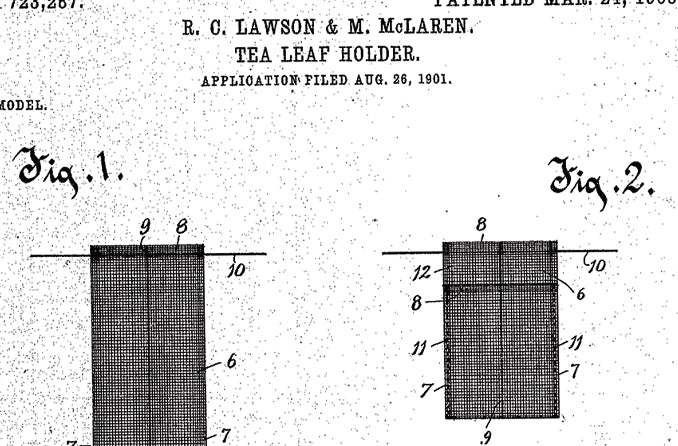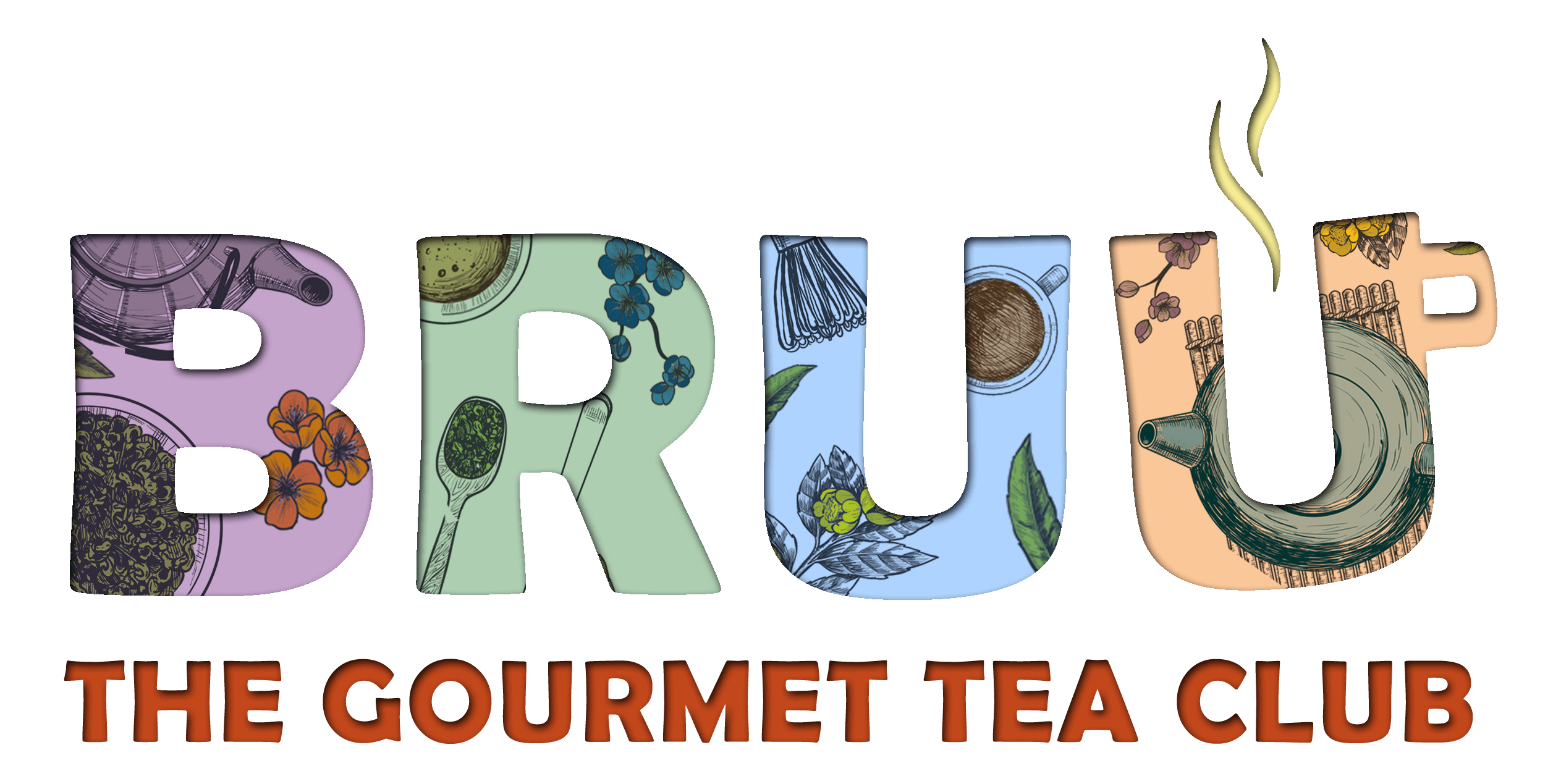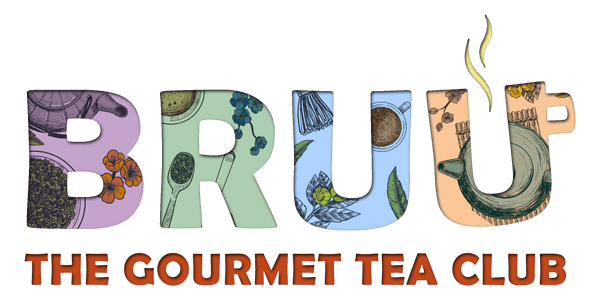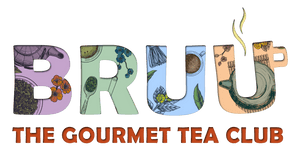How Are Tea Bags Made


Even though here at BRUU we feel very strongly that tea bags are only good for beauty and health reasons than inside a mug, I can’t help thinking of an old children’s show I watched called Come Outside where toddlers learned things like how do they get the stripes in toothpaste and how do we make yoghurt. This has to lead me now to ask a question - how are tea bags made? Why is it sometimes they break and taste different? Let’s go.
How tea was discovered?
Tea is a universal drink around the world. We have different styles, blends and different regions giving their unique spin and flavour to tea. Here at BRUU, we love to share our teas with members around the world, but it got us thinking - how was tea discovered? Where did the whole idea of tea originate? We’re going back to ancient China with its mystifying landscape and beautiful culture to go and discover, buckle in!
‘’Ancient folklore tale placed the creation of the brew at 2737 BC when a camellia blossom drifted into a cup of boiled drinking water belonging to Emperor Shen Nung. However, most scholars credit a reference found in Erh Ya, an ancient Chinese dictionary, dated about 350 BC.’’
Tea has been a pillar of Chinese culture since before the third century. The actual word tea in China ‘’Cha’’ is the root of various words associated with tea around the world and still holds strong associations with Buddhism. It was also considered a powerful medicinal drink.
The tea plant Camellia Sinensis originated in the lands between northwest India, north Burma, southwest China and Tibet. This plant was introduced to more than 52 countries from this origin area. Tea is considered one of the seven necessities of the Chinese way of life along with oil, salt, vinegar, firewood, rice and sauce - not tomato sauce!
Tea was an important commodity during the Song Dynasty China, tea farms at the time covered 242 counties. This ranged from more luxury teas such as tea from Zhejiang and Fujian which was also used as a tribute tea - more on that later.
Chinese tea, up until the mid-17 century was green tea. As foreign trade grew, the Chinese discovered that they could preserve their tea leaves with a special fermentation. The result of this was Black Tea.
How a teabag is made?
This changed in the early 20th century where tea bags were invented by accident. Teabags were invented quite by accident in 1904 when Thomas Sullivan, an enterprising merchant, wrapped samples of tea leaves in silk bags and sent them to prospective customers, some of whom dipped the bags directly into boiling water.
Herb teas, caffeine-free and cultivated from a variety of plant leaves, flowers, roots, bark, and seeds, have become enormously popular over the last 20 years. Although they were probably brewed as early as prehistoric times, herb teas were primarily consumed for medicinal purposes. Here are the blueprints for some original concepts of the humble tea bag...

Thomas went on to develop the idea, changing the silk bag to a gauze. The gauze was then later replaced by a paper bag, perfect for mass production and a little string and tag was added for easy withdrawal and perfect infusion time. Although the bag was now ready, material shortages during World War II put things on hold for a while.
It was in the 1950s, after the war, that the tea bag became popular during an era of inventions for household convenience. The teabag fitted in perfectly with a desire for new ‘make life easier’ products. It eliminated the need to empty the used tea leaves from the teapot and single cups of tea could be brewed without the use of a teapot.
The industry was finding that it's not producing enough small grade teas to fill the growing demand. The first tea bags only allowed the use of small particles of tea.
The process of bagging tea?
Picking
First the tea is picked from the tea estate and then it is transported down into the factoring for withering.
Withering
Withering practices call for manually spreading the leaves in thin layers and exposing them to the open air for between 18-20 hours. In the Modern factory, they will place the leaves in troughs, perforated drums, or tunnels and expose them to mechanical blasts of hot air. This process oxidizes the polyphenols, or tannins, the primary active ingredient, and turns the tea leaves a copper colour.
Curshing
They are crushed either by hand or on rotating tables called rolling machines. Either method twists the leaves so that they are eventually coated with their juices and torn into smaller pieces.
Drying
Tea leaves are mechanically dried using a high-temperature method to seal in juices and flavour. This process turns the leaves to their characteristic black colour. Oolong tea leaves are rolled, dried, and rolled again. Green tea leaves are steamed within 24 hours of harvesting, using either moist or dry heat in perforated drums or hot iron pans.
Milling
The leaves are brought to a mill room, where they are cut with a rotating blade into varying degrees of fineness, depending on the type of tea. The cut-up leaves are further refined by sifting them through mechanical sieves with meshes of varying grades. The tea used in tea bags is broken down or small-sized teas because they require a shorter brewing time.
Blending
The teas are blended according to company recipes to achieve a uniform taste and texture. Most teas are a blend of between 20-40 types of tea leaves. The processed and blended tea leaves are stored in hoppers that hold up to 800 pounds (363 kg) of tea. Flow tubes connect each hopper to a dosing wheel. The doser wheel resembles a ferris wheel with small chambers in the place of seats. The air pushes the leaves through the flow tube and into the wheel which separates the tea into the chambers in pre-measured amounts, usually two grams.
Bag Assembly
Two large rolls of filter paper is fed over the top and underneath the doser wheel. it releases the tea onto the bottom paper layer of paper as it moves along a conveyer belt. The top layer of paper is lowered onto the lower layer so that each measure of tea is sandwiched between the two layers.
Why tea bags grew in popularity?
It was this convenience factor that helped the teabag thrive in Britain and it was largely Tetley that gave the humble tea bag the biggest push before other companies soon caught on. By the late 1950s tea bags made up less than 3 per cent of the British market and by 2007 this rose to a phenomenal 96 per cent of the British market. Today you’ll be pushed to find a home or workplace in Britain that does not have a stash of teabags.
Now whilst the popular tea bag has helped make tea a more convenient experience it has taken a lot away from the tea itself. Teabags restrict the movement of tea leaves so many bags these days are filled with tea dust (called fanning’s) and flavours to help it taste better. The only real way to enjoy tea is loose, with whole leaves that are left to infuse freely and release all their natural goodness
So there you have the history of the tea bags. Something in my opinion that destroyed the awesomeness of the purest loose leaf tea in favour of commercialism and laziness.




Leave a comment